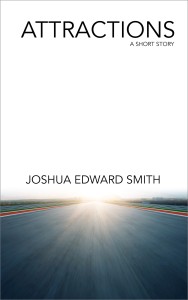(TL;DR: Don’t check this box. See the update at the end to understand why.)
Twitter just opened up the “Twitter Audience Platform” option for the kinds of campaigns we use to sell books. The idea is that your promoted tweet will not only run in Twitter, but it will also run in other mobile apps. Typically, these would be free ad-supported apps like games that make you sit through an ad now and then.
Always the adventurous one, I decided to go ahead and check the box to allow this. It then asked some questions that I didn’t really have good answers for, but here is what I put:
The reason they ask those questions is probably because some apps don’t want to include ads for competing websites or something. Beats me. That’s the only change to the campaign from what I told you to use in my how-to.
The campaign just started, but I already have a pretty stunning result:
My bid was $0.08. I haven’t had many impressions yet, but holy cow! Look at that click through rate! For reference, here is the same data when you only look at inside-Twitter impressions:
I don’t know what the deal is with the US campaign right now. But over time, I’m sure those will both settle in at 1% CTR like all my other campaigns.
Not only is the CTR I’m getting in non-Twitter apps staggeringly high (about 10x what I usually see in Twitter), but because of that, the cost per click is low. That’s because Twitter gives your ads a discount if they have exceptional CTR. I don’t know why they do that, but I’ve read it in multiple places, and it seems to be the case here. They are only charging me $0.05 instead of $0.08 per click.
Another possibility is that nobody has opted in to the Twitter Audience Platform yet, so I’m bidding against a far smaller pool of advertisers. (With this CTR, I doubt that very much.)
I don’t have any conversions to actual sales, since I just started this campaign and I’m being a cheap bastard and not bidding the $0.10 I need to bid to get a good flow of impressions yet. But damn. This Twitter Audience Platform thing is amazing.
As always, I’ll update when I have more data…
Update: Click Fraud Maybe?
After a week, the click-through-rate on the Twitter Audience Platform impressions continue to be sky-high, however my conversion rate is terrible. Since nothing has changed on my Amazon pages, and I’m at the lowest possible price (which we have independently established gives the highest conversion rate), I have to conclude that when people click on the Twitter Ads in other apps, they never go on to make a purchase.
Why? The most obvious answer is click fraud. When you add an ad platform to your app, you get a percentage (60% in Twitter’s case) of the revenue those ads generate. The more revenue the ads produce, the more you make. This creates an environment perfect for click fraud. Click fraud is pretty easy: you just contract with a bunch of people in a very poor country to download your app and do nothing but click the ads.
It’s very hard for the ad platform to detect it, and in the world of mobile apps, even if you get caught, you can easily just create a new identity, publish your apps there, and sign back up.
I have no hard evidence that this is happening, of course. But I do know that the CTR for the Twitter audience platform is 7-15 times higher than I see on Twitter, and the conversion rate is crap. So regardless of the reason, this is a terrible deal for advertisers.
Bottom line: DO NOT CHECK THE TWITTER AUDIENCE PLATFORM BOX when you set up your ad.








